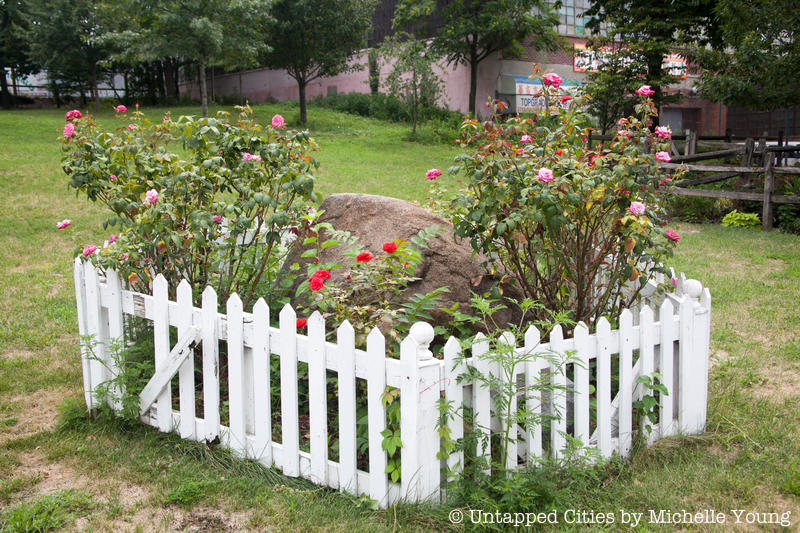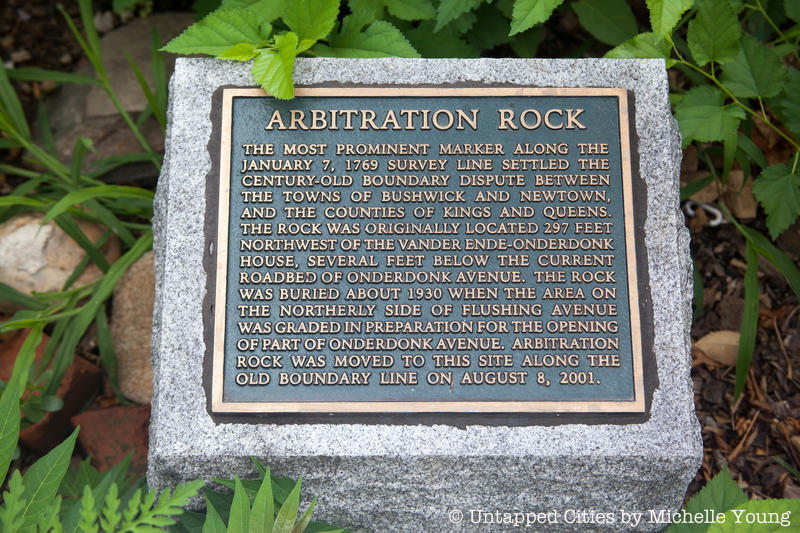4. Arbitration Rock Between Queens and Brooklyn
 Arbitration Rock
Arbitration Rock
The Pilgrims have Plymouth Rock and New Yorkers have Arbitration Rock. Beloved by residents of the outer boroughs, Arbitration Rock helped solve a border dispute that lasted for over a century. Before the consolidation of New York City, many of the current neighborhoods in Queens and Brooklyn were their own towns and villages. Two of these, Newtown and Bushwick, fought over a shared border from 1660 until 1769 when an official survey was completed.
Part of the surveyor’s line included a rock “to a noted heap of stones, with a stake in the middle, know by the name of Arbitration Heap, and from thence in the same direct line up to the hill or mountain until it meets the line of Flatbush.” As a result of its inclusion in this momentous peace survey, the rock was renamed Arbitration Rock and has remained in situ ever since. Or has it?

According to a nineteenth century account the rock, which per the Brooklyn Charter form part of the 18th Ward’s border, “was blown to pieces, and removed, by individuals who probably knew not its value as an ancient and important landmark.” The rock was purportedly found in 1880 then lost again for 20 years and then rediscovered and lost again. This game of hide and seek continued until 2001. After a seven year research quest by William Asadorian, the librarian with the New York Public Library was confident he knew where the rock lay. The City of New York agreed to do the dig, as utility work was already in the pipeline, and brought up the rock from underneath the streets.
It was placed in the backyard of the Vander Ende-Onderdonk House, a Dutch stone house that is a New York City, State and federal landmark, along the original boundary between Brooklyn and Queens. Since the original boundary was adjusted in 1925, this places Arbitration Rock on the Queens side, much to the ire of Brooklyn politicians.





